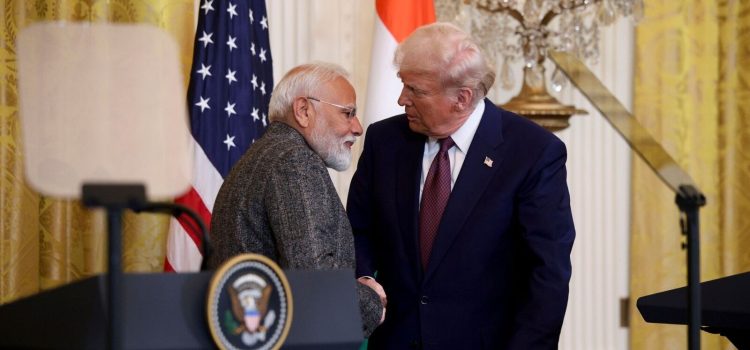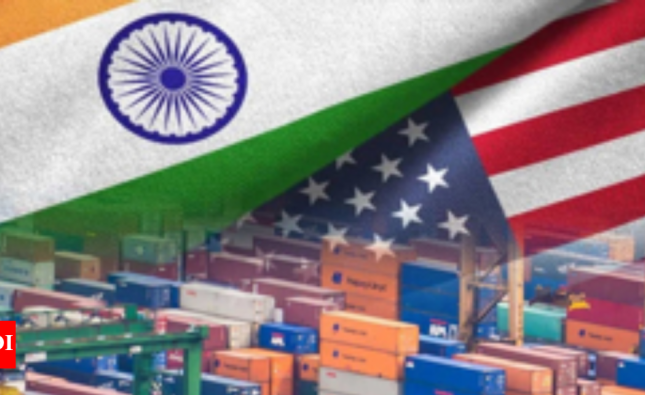
Trump India tariffs: Contrary to widespread expectations and dashing New Delhi’s hopes of a relatively better trade deal, US President Donald Trump, on July 30, announced a 25 per cent tariff on “fiend” India, to be effective from August 1. The 25 per cent tariff excludes a penalty due to India’s energy and defence ties with Russia.
Trump accused India of imposing higher tariffs on US imports and also having the “most strenuous” trade barriers.
“While India is our friend, we have, over the years, done relatively little business with them because their tariffs are far too high, among the highest in the world, and they have the most strenuous and obnoxious non-monetary trade barriers of any country,” Trump said on his social media platform Truth Social.
India was not the only country in Trump’s firing line. He also announced a 50 per cent tariff on most Brazilian goods but excluded a few sectors — including aircraft, energy, and orange juice — from the tariff.
Later in the day, he announced a trade deal with South Korea with a 15 per cent tariff rate.
After announcing tariffs against India, Trump said that the US will continue trade negotiations with New Delhi.
Trump’s 25% tariffs a blow to the Indian economy?
Trump’s tariff is a significant negative for several sectors of the Indian economy, including textile, auto components, leather goods, gems and jewellery, and certain food exports.
Consequently, the tariffs are likely to have a cascading effect on other sectors and may weigh on overall stock market sentiment.
Experts have begun trimming their growth forecasts for India, as the tariffs may affect exports and could also impact private capital expenditure.
“When the US had initially imposed tariffs, we had lowered our forecast of India’s GDP expansion to 6.2 per cent for FY26, presuming a tepid rise in exports and a delay in private capex,” said Aditi Nayar, Chief Economist, ICRA.
“The tariff (and penalty) now proposed by the US is higher than what we had anticipated, and is therefore likely to pose a headwind to India’s GDP growth. The extent of the downside will depend on the size of the penalties imposed,” Nayar said.
Trump’s tariffs: How will they impact the Indian stock market?
The Indian stock market may stay in a range after the tariff announcements, with focus on next round of talks.
Nifty futures were down about 200 points around 5 AM on Thursday.
The domestic market has been rangebound for over two months due to a delayed India-US trade deal. Trump’s 25 per cent tariffs are a negative development that may keep the mood sombre.
“In the short term, the market will try to shed off its complacency. We do not expect a huge knee-jerk reaction but a rangebound market focused on ongoing earnings,” said Utsav Verma, Head of Research – Institutional Equities, Choice Broking.
He said key export-oriented sectors like textiles, pharmaceuticals, and automotive components are likely to be most impacted and may see reduced investor interest in the short term.
Some experts point out that new tariffs are not significantly above what the market had expected. However, the “penalty” part remains undefined at this stage.
“The announcement of a 25 per cent tariff on Indian goods, while higher than anticipated, broadly falls within the 15–20 per cent range that markets had been bracing for. In that sense, it is not entirely unexpected,” Feroze Azeez, Joint CEO, Anand Rathi Wealth Limited, observed.
“This could weigh on near-term export competitiveness and trigger currency volatility if sentiment deteriorates. That said, the overall trade and investment relationship between India and the US still has room for improvement and is not yet in a worrisome zone,” said Azeez.
Azeez highlighted that the Indian market is currently being driven largely by domestic investors, and FIIs are almost 85 per cent short. Therefore, a major sell-off is not expected.
“Some volatility is likely; any dips will be buying opportunities for investors with even two to three years’ time frames, as we have already had a 10-month time correction,” said Azeez.
Trump’s tariffs on India will be effective from August 1, and at this point, it appears unlikely that Trump will extend this deadline.
However, negotiations between the two countries will continue, and expectations that tariffs will come down to the 15 per cent range remain.
“Recent progress in trade negotiations suggests a constructive path forward, and we believe that the trade deal will eventually follow, provided both nations show the necessary political will. Many investors expect the tariff rate to eventually settle around 15 per cent, paving the way for renewed confidence and stronger trade ties,” said Verma.
Read all market-related news here
Read more stories by Nishant Kumar
Disclaimer: This story is for educational purposes only. The views and recommendations expressed are those of individual analysts or broking firms, not Mint. We advise investors to consult with certified experts before making any investment decisions, as market conditions can change rapidly and circumstances may vary.











